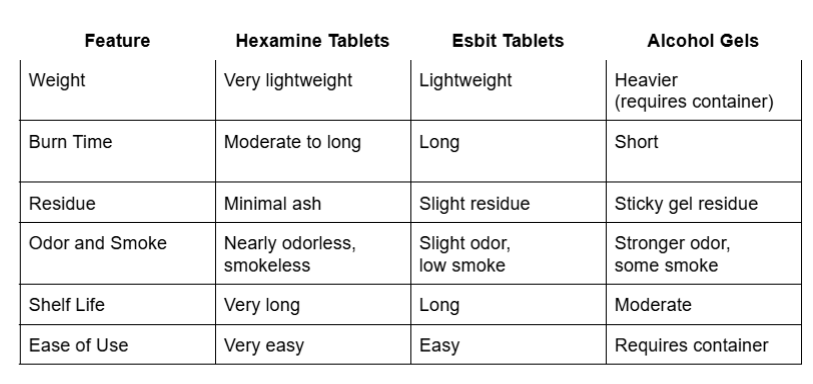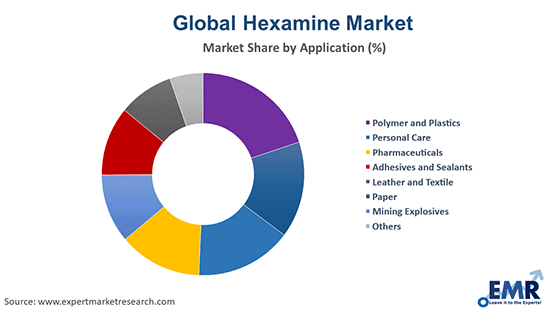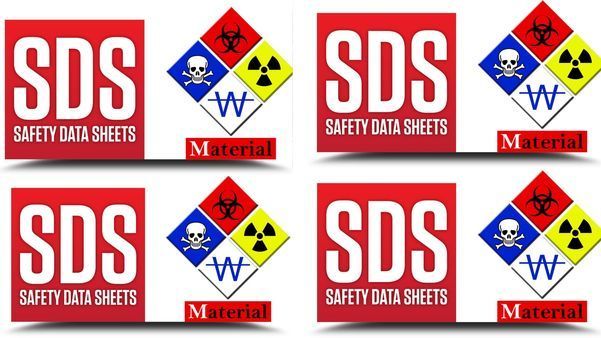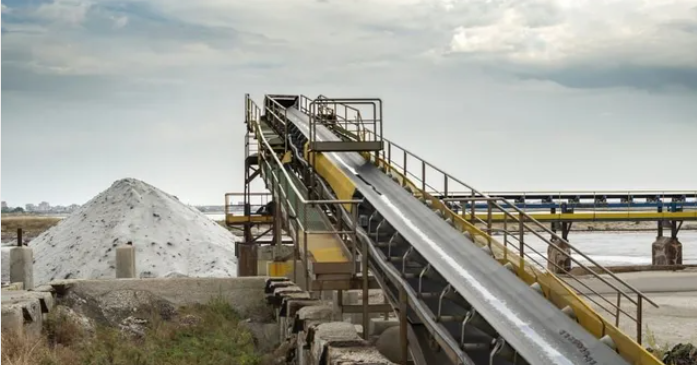Hexamine: The Multifunctional Solid for Resins and Fuel Tablets
What is Hexamine?
Hexamine, also known as methenamine or urotropin, is a crystalline, white solid with a remarkable range of industrial applications. From acting as a curing agent in phenolic resins to serving as a clean-burning solid fuel component in camping tablets and military rations, this compound plays a vital role across multiple sectors. But what exactly makes Hexamine so versatile and valuable?
Let’s explore its chemical identity, trace its historical journey and clarify the common names by which it is known.
Chemical Structure and Formula
Hexamine has the molecular formula C₆H₁₂N₄, and its structure is a perfect example of chemical symmetry and efficiency. It forms a cage-like, heterocyclic compound, in which four nitrogen atoms are evenly distributed around a central carbon framework. This stable, three-dimensional geometry is the result of a condensation reaction between ammonia and formaldehyde — a process that also hints at its wide chemical compatibility.
Historical Discovery and Development
The origins of Hexamine trace back to the 1850s, when chemists first synthesized it during early studies of amine-formaldehyde reactions. Over the following decades, its utility in pharmaceuticals, explosives, and resins began to emerge. By the 20th century, it had become a standard material in both chemical manufacturing and military logistics.
Common Synonyms
Depending on its application, Hexamine may also be referred to as methenamine (especially in medical contexts) or urotropin, a name often used in European literature. These synonyms reflect the compound’s diverse functionality and enduring relevance in science and industry.
Hexamine in Industrial Resin Production
One of the most significant industrial uses of hexamine is in the manufacturing of phenolic resins, where it functions as a crucial curing agent. Its chemical behavior and structural properties make it particularly well-suited for applications requiring thermal stability, mechanical strength and chemical resistance - all essential traits in advanced resin systems.
Role in Phenolic Resin Manufacturing
Hexamine acts as a hardening agent in the production of thermosetting phenolic resins, which are formed by the reaction of phenol with formaldehyde. When heated, hexamine decomposes to release formaldehyde and ammonia, initiating the cross-linking process that transforms the resin from a pliable state into a rigid, heat-resistant polymer.
This thermoset transformation is vital in industries that demand durable, heat-tolerant materials, such as automotive, aerospace, construction and electronics. The resulting resins exhibit excellent dimensional stability, resistance to deformation and long-lasting performance even in harsh operating conditions.
Application in Molding Compounds and Brake Linings
In molding compounds, hexamine-cured phenolic resins provide outstanding heat resistance, electrical insulation, and mechanical strength. These properties make them ideal for manufacturing electrical components, household appliance parts, and various automotive elements.
Perhaps more critically, hexamine plays an essential role in friction materials like brake pads and clutch facings. In these applications, phenolic resins serve as binders that maintain structural integrity under high thermal and mechanical stress. Hexamine ensures a consistent and robust curing process, which is fundamental for delivering the performance and safety required in braking systems.
Why Hexamine is Preferred
Several factors make hexamine the preferred curing agent in phenolic resin applications. First, it is cost-effective, offering a high degree of efficiency at relatively low usage levels. Second, it exhibits excellent compatibility with phenolic systems, ensuring predictable curing behavior and product consistency across a wide range of manufacturing conditions.
Its solid, non-volatile nature also makes it easier to handle and incorporate into resin formulations compared to liquid alternatives. For manufacturers aiming to balance performance, economy, and safety, hexamine continues to be a reliable and widely used choice.
Hexamine as a Fuel Tablet: Portable Power Source
Beyond its industrial role, hexamine is widely recognized for its use as a solid fuel in portable heating applications. In the form of compact, lightweight tablets, it serves as a reliable source of energy in situations where access to traditional fuel is limited or impractical. From outdoor enthusiasts to military personnel, hexamine tablets are trusted for their efficiency, portability and clean burn.
Use in Camping and Military Applications
Hexamine fuel tablets are a staple in camping gear, emergency survival kits and military field rations. Their lightweight and compact form makes them ideal for backpackers and soldiers who need a dependable cooking or heating option on the go. Just a small stack of tablets can provide enough heat to boil water, warm food, or power small stoves in remote or extreme environments.
In military contexts, hexamine fuel is favored for its non-reflective flame and low smoke output, which helps avoid detection during covert operations. Its long shelf life and stability in a variety of climates further contribute to its reliability in field use.
Combustion Properties
Hexamine tablets are valued for their high calorific value, typically around 30 MJ/kg, which ensures a strong, sustained flame capable of cooking meals or boiling water within minutes.
One of the most appealing features is its smokeless and nearly odorless combustion, which not only supports stealth in military use but also improves the camping experience by minimizing unpleasant smells or residue. Hexamine burns cleanly without producing visible soot, leaving behind minimal ash, making cleanup quick and easy.
Comparisons with Other Solid Fuels
When compared to alternative portable fuels like
Esbit tablets,
alcohol gels, or
paraffin blocks, hexamine offers a unique balance of performance and convenience. Here’s a quick comparison:

Overall, hexamine stands out for those needing a dependable, clean-burning solid fuel in challenging or off-grid environments. Whether you’re trekking through the wilderness or preparing for emergencies, it remains one of the most practical and efficient fuel solutions available.
How Hexamine is Manufactured
The production of hexamine is based on a straightforward yet highly efficient chemical reaction between ammonia (NH₃) and formaldehyde (CH₂O). This process forms a stable heterocyclic compound known as hexamethylenetetramine, or simply hexamine.
Reaction of Ammonia and Formaldehyde
The synthesis begins with mixing aqueous solutions of ammonia and formaldehyde in a molar ratio of 1:1. Under controlled temperature and pH conditions, the compounds undergo a condensation reaction:
6 CH₂O + 4 NH₃ → C₆H₁₂N₄ + 6 H₂O
This reaction forms hexamine and water as a byproduct. The solution is then cooled, causing hexamine to crystallize out as a white, odorless solid. These crystals are filtered, dried and further processed depending on the intended application.
Industrial Synthesis Process
On an industrial scale, hexamine production is conducted in batch or continuous reactors, optimized for yield and purity. The choice of process parameters - temperature, concentration, and reaction time - greatly affects crystal size and product quality. Once crystallized, the hexamine may be ground into powder or pressed into tablets for specific industrial or consumer uses.
This process is considered highly efficient, with most of the input materials converted into the desired product. The simplicity of the reaction also makes hexamine production cost-effective, which contributes to its widespread use in both large-scale manufacturing and commercial packaging.
Environmental Considerations
While the chemical reaction itself is relatively clean, both ammonia and formaldehyde are hazardous materials that require careful handling. Modern manufacturing facilities are equipped with scrubbers and closed systems to minimize emissions and ensure worker safety.
Additionally, efforts are being made in the industry to reduce formaldehyde emissions and adopt greener synthesis routes, including using bio-based feedstocks. As environmental regulations tighten globally, sustainability remains a growing focus in hexamine production.
Storage, Handling and Safety Precautions
While hexamine is widely used in both industrial and consumer applications, it must be handled with care to ensure safe usage and environmental protection. Understanding proper storage, exposure risks and disposal methods is essential for minimizing hazards.
Safe Storage Conditions
Hexamine should be stored in a cool, dry and well-ventilated area, away from sources of moisture and humidity. Because it is hygroscopic, exposure to moisture can cause clumping or degradation. Containers should be tightly sealed and kept away from strong acids and oxidizing agents, which may lead to unwanted chemical reactions.
Toxicity and Exposure Risks
Though hexamine is relatively low in toxicity under normal conditions, inhalation of dust or prolonged exposure may irritate the respiratory system, eyes or skin. In industrial settings, proper personal protective equipment (PPE) such as gloves, masks and safety goggles should be used.
According to Safety Data Sheets (SDS), hexamine should be handled following standard chemical safety protocols. While not classified as highly hazardous, it can release formaldehyde under certain conditions, which is a known irritant and potential carcinogen.
Disposal Methods
Disposal of hexamine should follow local environmental regulations. In most cases, small quantities can be diluted and disposed of through approved chemical waste systems. Industrial waste must be treated using authorized disposal services to prevent contamination of soil or water sources. Incineration in a controlled environment is also a viable, eco-conscious method.
Global Market and Demand Trends
The global market for hexamine continues to show steady growth, driven by its diverse applications across resins, pharmaceuticals, and defense sectors. As industries increasingly seek materials with thermal stability, chemical resistance, and ease of handling, hexamine remains a key ingredient in a wide range of formulations.
China, Germany and India are among the leading producers of hexamine, supplying both domestic and international markets. China, in particular, dominates global exports due to its large-scale manufacturing capacity and competitive pricing.
The resin industry accounts for the largest share of demand, especially in the production of phenolic molding compounds and brake linings. Meanwhile, the pharmaceutical sector uses hexamine derivatives in urinary antiseptics, and the defense industry relies on hexamine-based fuel tablets for field operations.
As environmental regulations tighten and demand for high-performance materials rises, the hexamine market is expected to remain robust, with continued innovation in production and application techniques.

Hexamine Alternatives and Substitutes
While hexamine is widely valued for its versatility and efficiency, alternative materials are available for both fuel and resin applications, depending on specific performance or regulatory requirements.
Other Fuel Tablet Options
In portable fuel systems, trioxane and alcohol-based solid fuels (such as ethanol or methanol blocks) are common substitutes for hexamine. Trioxane tablets burn cleanly and are often used in military rations, while alcohol blocks are favored in camping due to their ease of ignition and relatively safe handling. However, these alternatives may have lower energy density or shorter burn times compared to hexamine.
Resin Curing Alternatives
In phenolic resin systems, alternatives such as paraformaldehyde and melamine are sometimes used as curing agents or resin modifiers. Paraformaldehyde serves as a formaldehyde source in certain curing processes, while melamine is often used when higher water resistance or surface hardness is required. Still, hexamine remains the preferred choice for many applications due to its cost efficiency, solid form, and reliable performance.
FAQs About Hexamine
Is hexamine toxic?
Hexamine is generally considered to have low toxicity under normal handling conditions. However, inhalation of dust or prolonged skin contact can cause irritation. In certain environments, it may decompose and release formaldehyde, which is a known irritant and potential carcinogen. Proper handling, storage, and the use of personal protective equipment (PPE) are recommended, especially in industrial settings.
Can you cook with hexamine tablets?
Yes, hexamine fuel tablets are commonly used for cooking in camping and survival situations. They are safe for boiling water and heating food when used in well-ventilated areas. However, food should not be placed directly on the flame, and the tablets should not be used indoors or in enclosed spaces due to potential fumes.
Where to buy hexamine for industrial use?
Industrial-grade hexamine can be purchased from chemical suppliers and distributors. And DECACHEM is one of the best in business. It is typically available in bulk quantities as powder, crystals or tablets. Buyers should ensure the supplier meets regulatory and quality standards, especially if the hexamine is intended for use in pharmaceuticals or resins.
Is hexamine banned in any countries?
Hexamine is generally legal and widely available; however, its sale and use may be restricted in some countries due to its potential misuse in explosive manufacturing. Regulatory oversight varies, so importers and users should always check local laws and compliance requirements.
Conclusion: Why Hexamine Remains Indispensable
Hexamine stands out as a multifunctional compound with enduring value across a wide range of industries - from phenolic resin production and solid fuel tablets to pharmaceuticals and specialty chemicals. Its unique chemical properties, cost-effectiveness and versatility make it a preferred choice in both legacy applications and emerging technologies.
As global markets evolve and demand for high-performance, compact and efficient materials grows, hexamine continues to prove its long-term utility. Whether in manufacturing, outdoor gear or defense systems, it remains an indispensable material with lasting relevance.
















